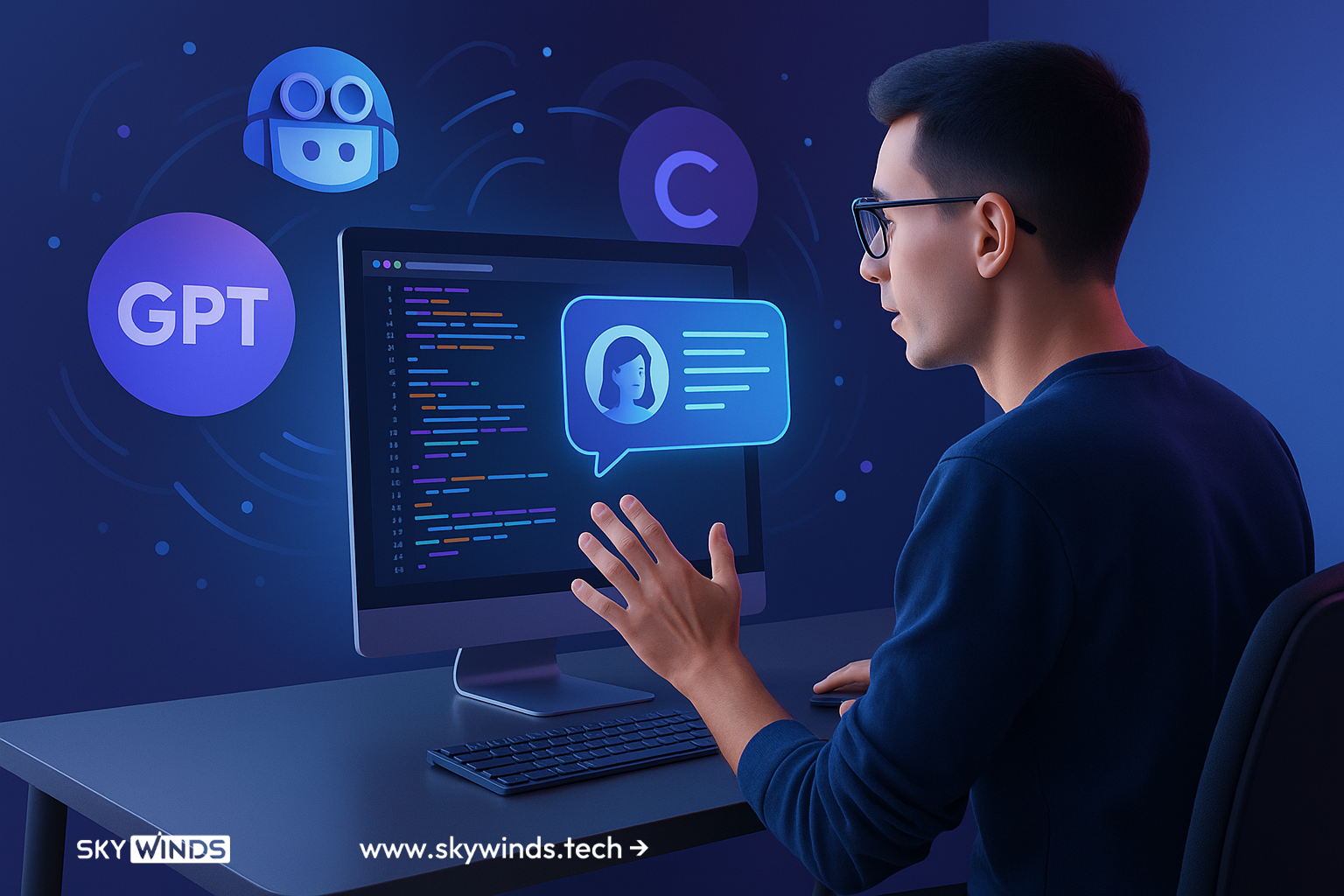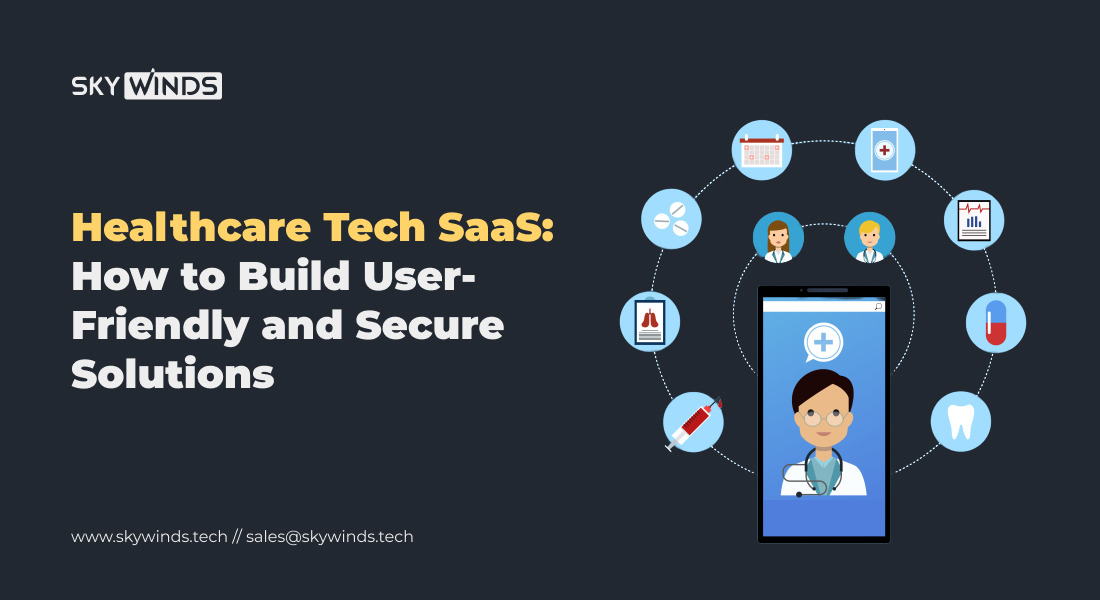Table of Contents
Introduction
If you’re not leveraging vibe coding in 2025, your development cycle is already behind. The rules of custom software have changed — and they didn’t ask for your permission.
Vibe coding isn’t just a buzzword. It’s a full-blown movement reshaping how developers, startups, and enterprise teams build software. Instead of slinging lines of code, engineers now direct AI copilots to generate entire components, workflows, and even architecture — all through natural language.
In short: you vibe, it builds.
This isn’t theory. It’s happening. From Jack Dorsey spinning up a chat app in a single day using only prompts, to product managers creating full dashboards with zero backend experience — vibe coding is collapsing build times and reshaping the dev hierarchy.
But is it just hype? Or a turning point in how custom software gets done?
In this blog, we’ll unpack what vibe coding really is, how it works, where it shines (and breaks), and why custom software firms — like Skywinds — are adapting fast. Whether you’re a SaaS founder, CTO, or product team lead, this guide will help you understand why this matters now and how to stay competitive as the coding paradigm shifts under your feet.
What Is Vibe Coding, Really?
A Paradigm Shift — From “Writing Code” to “Directing Intelligence”
At its core, vibe coding flips the traditional dev workflow on its head. Instead of painstakingly writing syntax line by line, developers now orchestrate code using large language models (LLMs) like GPT‑4, Claude, or CodeWhisperer. You describe what you want — the vibe of a feature, an interaction, a data flow — and the AI handles the build.
It’s not code-free, but it’s “code-light.” You’re not just programming — you’re collaborating with a synthetic co‑developer. Think: design-first, prototype-fast, iterate-in-real-time.
Origins — From Meme to Methodology
The term “vibe coding” started as a tongue-in-cheek Reddit meme in 2023. Developers jokingly said they were “vibing” features into existence with ChatGPT and GitHub Copilot. But by late 2024, that joke became serious. Andrej Karpathy, founding member of OpenAI, leaned into it — calling it the next evolution of AI-native development.
By early 2025, WSJ confirmed enterprise adoption of vibe coding, citing real-world usage in enterprise dev workflows.
Tools Powering It — GPT, Copilot, Claude, Cursor, Replit, and More
The rise of vibe coding wouldn’t be possible without a new generation of AI-native tools:
- ChatGPT-4 / GPT-4.5: Natural language-first code generation.
- GitHub Copilot X: Real-time code suggestions inside your IDE.
- Cursor: AI-native code editor purpose-built for conversation-driven development.
- Claude 3: Trusted by teams needing long-context understanding.
- Replit Ghostwriter: Enables multi-modal builds right in the browser.
Together, they’ve redefined what it means to build. Coders aren’t just typing — they’re thinking, vibing, and iterating in a new dimension.
How Vibe Coding Changes the Custom Software Game
From Prototypes in Weeks to Hours
Speed is the most obvious — and most disruptive — benefit. What once took a team of developers several weeks can now be prototyped in a few hours by a single person using AI tools. Need a customer portal with user auth, dashboard analytics, and notifications? A prompt-based AI assistant can generate 80% of the boilerplate within minutes.
For custom software firms, this slashes lead times and expands client capacity. It also creates new pressure: clients now expect delivery at AI speeds — not traditional dev timelines.
Accessibility: Empowering Designers, PMs, and Non‑Coders
Vibe coding opens the door for more players on the product team. A UX designer can now spin up a working UI. A product manager can build a testable backend. Even founders with no coding background can develop scrappy MVPs — not wireframes — for investor demos.
This democratization is shifting power dynamics within teams. Developers aren’t the sole builders anymore. Instead, they become integrators, reviewers, and performance optimizers.
Lower Costs, Higher Iteration Velocity
By offloading repetitive tasks to AI, vibe coding cuts dev costs significantly. One senior engineer, armed with smart tools, can now deliver the output of an entire junior dev team. For software firms, that means doing more with leaner teams and tighter budgets — while still shipping faster.
Iteration velocity is also off the charts. Want to test three different user flows? Just prompt three variations and deploy A/B tests the same day. This speed isn’t just convenient — it’s strategically powerful for startups chasing product-market fit.
Where It Shines—and Where It Fails
Ideal for MVPs, Internal Tools, and UI Work
Vibe coding excels in specific use cases — especially where speed trumps perfection. MVPs, dashboards, prototypes, and internal tools are all low-risk targets. Need a quick admin panel for managing orders? Or a customer survey page? These are tasks that AI can handle with minimal human intervention.
Front-end heavy applications with predictable logic are prime candidates. It’s fast, flexible, and “good enough” for early-stage or internal use.
Risks: Technical Debt, Security Blind Spots, Versioning Chaos
But for all its flash, vibe coding has real flaws. One major issue? Technical debt. AI-generated code often lacks structure, testing, or long-term maintainability. You get a working version — but under the hood, it’s spaghetti logic waiting to break at scale.
Security is another major blind spot. AI models don’t understand context like a senior engineer. They may miss input sanitization, open up APIs, or overlook auth rules. Without rigorous human review, vulnerabilities slip through.
Versioning and collaboration also get messy. AI-generated code can conflict with Git workflows or overwrite nuanced manual edits. Teams need strict protocols or version chaos creeps in fast.
The “Spaghetti Code” Problem of Auto‑Generated Logic
Many developers report that vibe-generated code is often functional… but barely readable. Variables have no naming conventions. Logic chains are shallow but brittle. And refactoring it later becomes a nightmare.
This is where seasoned engineers still shine — not in writing every line, but in architecting foundations, reviewing output, and guiding AI tools with strategic intent.
Real-World Examples of Vibe Coding in Action
Jack Dorsey’s 1-Day Chat App Build
In July 2025, Jack Dorsey launched Bitchat, a peer-to-peer messaging app built almost entirely with AI. Using Goose, an open-source AI coding assistant developed by Block, he described the app’s vibe and feature set in natural language — and the AI built it. Within a day, he had a working prototype. No IDE. No manual coding. Just prompts.
It marked the first publicly confirmed example of a production-grade app coded primarily through “vibing.”
Startups Using Claude to Build MVPs Without Engineers
Startups are now using Claude 3 and GPT-4.5 to build MVPs before hiring a single developer. Business Insider recently profiled a founder who created an AI-first analytics platform using LLMs to scaffold the backend, generate API routes, and build the frontend with Next.js — all by describing features conversationally.
This shift is enabling founders to go from idea to demo without technical hires, reducing early burn rates while accelerating proof-of-concept.
Internal Tools Built with Replit + GPT-4 at Seed-Stage SaaS Firms
Replit’s AI-native IDE now lets small SaaS teams rapidly build admin panels, support dashboards, and onboarding flows using just natural prompts. One verified use case involved a seed-stage HR tech company generating an entire employee record system — CRUD logic, form validation, and database schema — in two days using Replit Ghostwriter.
These tools are no longer experimental. They’re being used in production by real startups, today.
How Smart Teams Are Adapting
Embedding AI-Native Workflows in DevOps
The smartest teams aren’t resisting vibe coding — they’re reengineering their pipelines to embrace it. DevOps workflows are evolving to include AI pair-programming sessions, natural-language code commits, and prompt templates for infrastructure-as-code.
Teams at Skywinds, for example, are layering AI tools into CI/CD systems. Instead of writing all infrastructure manually, they co-generate deployment configs, runbooks, and test scripts using natural prompts — saving hours of YAML drudgery per week.
This isn’t AI replacing humans. It’s humans accelerating with AI.
Rethinking QA and Security in Vibe Projects
AI makes building fast. But reviewing? That still needs humans.
To mitigate risks, smart teams are embedding security and QA reviews into every AI-assisted build. At GitHub and Amazon, developers use AI for code generation but follow up with automated scans, penetration tests, and manual audits.
Skywinds recommends a three-layer QA stack for AI-generated code:
- Lint + Scan (auto-check for vulnerabilities)
- Human-in-the-loop review (especially on auth, DB access, API logic)
- Stress testing + rollback plans
Treat vibe code like junior dev code: useful, but review every line before pushing to prod.
Developer Roles Are Evolving — “Builder” Mindsets over Coders
AI isn’t killing the dev role — it’s redefining it. Coders are becoming “builders.” Their value lies not in typing speed, but in:
- Framing smart prompts
- Validating logic from AI
- Refactoring and scaling systems
- Training domain-specific copilots
Just like Figma shifted the designer’s toolkit, vibe coding is reshaping how devs add value. It’s less about writing — more about thinking, validating, and shipping.
Is This the End of Traditional Coding?
Not Yet — But It’s Time to Rethink Your Stack
Despite the buzz, traditional coding isn’t dead. Complex systems, performance-critical apps, and security-heavy builds still demand deep engineering. No AI can fully replace years of system design wisdom or performance tuning in Rust, Go, or C++.
But the trend is clear: AI-first workflows are eating the edges of traditional dev. If you’re not exploring how to offload boilerplate, automate scaffolding, or augment UI builds with vibe tools, you’re competing with one hand tied behind your back.
The future isn’t no-code. It’s less-code — guided by intelligent collaboration.
Composable Architecture + LLMs = Future of Dev?
Vibe coding isn’t just about prompting — it’s about plugging together smart building blocks.
Forward-thinking dev teams are combining composable architecture (think micro frontends, API-first services) with LLM-powered generation. You prompt the structure; the system assembles the pieces. The result? Rapidly built apps that are still modular, testable, and scalable.
It’s the best of both worlds: speed and structure.
Conclusion
Vibe coding is no longer an edge-case experiment — it’s a foundational shift in how custom software gets built.
It empowers speed without sacrificing imagination. It brings non-coders into the build process. And it forces engineering teams to evolve — not by writing more code, but by thinking smarter about how code is created, reviewed, and maintained.
But like any powerful tool, it’s only as effective as the strategy behind it.
At Skywinds, we see vibe coding as part of a broader evolution: AI-assisted, human-guided, and outcome-focused. Not every project should be built with AI — but many can be accelerated, improved, or prototyped with it.
If your team is still stuck in a pre-2025 workflow, we should talk.
Skywinds Solutions helps forward-thinking companies modernize how they build — blending AI tooling with real engineering discipline. Whether you’re starting fresh or scaling up, we can help you integrate vibe workflows into your stack with zero chaos and full control.
FAQs
1. What is vibe coding and how does it work?
Vibe coding is a development approach where developers use natural language to prompt AI tools to generate software code. It shifts focus from manual coding to AI-guided building.
2. Is vibe coding good for custom software development?
Yes, especially for rapid prototyping, MVPs, and internal tools. It speeds up delivery and allows non-coders to participate, though expert review is still critical.
3. Can vibe coding replace traditional developers?
Not entirely. It can handle boilerplate and basic logic, but complex systems still need human architects, security experts, and code reviewers.
4. What tools are used in vibe coding?
Popular tools include ChatGPT-4, Claude 3, GitHub Copilot, Replit Ghostwriter, and Cursor — all capable of turning prompts into functional code.
5. How do I start using vibe coding in my projects?
Start by integrating AI tools into your dev stack, building small internal tools, and gradually introducing AI-guided workflows with proper human oversight.




